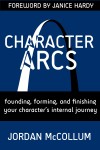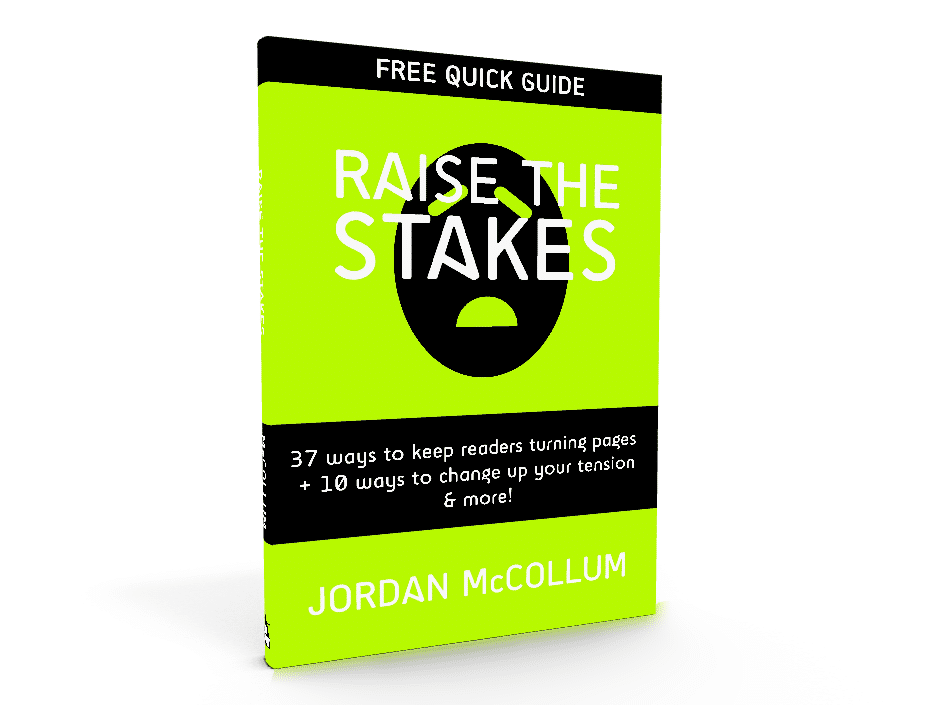So we know we have to set up a character arc in the beginning to create the maximum effect as the character goes on a journey of internal, emotional growth (in a growth arc). Since the character is going to learn and grow, obviously they’ll start off in a place where they need this growth. In that sense, it’s a bad place.
Of course, sometimes—often!—our character doesn’t realize he’s in a bad place. He’s operating under a mistaken belief about himself and the world, but right now, that belief is working for him. It’s protecting him from repeating the bad experience that left him with this wrong belief in the first place.

For example, maybe our hero couldn’t learn to ride a bike as a child, and his mother ridiculed him for it, etc. (his bad experience). As an adult, he has a hard time believing he’s capable (his mistaken belief). He protects himself from confronting this painful belief by not trying new things, living a cautious life (his outward behavior at the outset). Throughout our story, he’ll learn that he is a capable person after all (his character arc).
But at the beginning of the book, our hero doesn’t know he’s about to learn and grow. He’s bopping along in his safe, cautious little life, thinking all is well, and he’ll never have to change. More than that, he isn’t consciously thinking about how cautious and small his world has become, or how incapable he feels, or anything else. He thinks he’s happy because he believes he’s solved the problem of feeling incapable—by avoiding situations where he’s incapable.
Let’s frown-smile for our protagonist here. It’s sad and cute that he feels that way, and throughout the course of the book, we’re going to prove to him that he’s wrong. To do that, we’re going to have to break him down and make him face the hard reality of his mistaken belief before he can move past it to grow.
But we’re not there yet. Right now, we’re just at the beginning, where he still thinks things are fine. He won’t realize he’s limited his life this way, or that he has this mistaken belief until later in the story. So how can we show them to the reader and set up the character arc adequately?
Subtly setting up the character arc
I believe that we have to set up a character arc early on in a book with an incident that illustrates the mistaken belief in action, and how that mistaken belief is holding the character back. In a book where the character realizes they need to learn and grow early on, it’s usually fairly easy to do this in the beginning. You can be somewhat obvious without hitting the reader over the head.
On the other hand, when our character isn’t ready to begin the journey, when they’re still happy in—and oblivious of—the mistaken belief, we have a bigger challenge: showing the character’s belief and how it’s crippling them to the reader while allowing our character to remain blissfully oblivious.
The deep-seated mistaken belief can actually work in our favor here. The character is so used to using this belief to justify his actions and explain away contradictory material that we can have him do just that, showing the reader the thought process that’s holding him back. So for this example, perhaps we present him with the opportunity to do something he’s always wanted to—climb Mount Everest or be on a reality TV show—and he lets the opportunity pass.
Naturally, we can’t make the impact of this action too bad, or we’ll clue the character into his own need for change too soon. We can use a more subtle “bad consequence” to prove that this attitude isn’t helping him—whether that’s a split-second wistful wish that he could accomplish that goal, or suspiciously harsh mental castigation not to fritter away his life in pointless dreams.
These techniques work best for close narration (first person and deep POV third person), where we can use a slightly more unreliable narrator, rather than the more dispassionate narrators (more distant third person and omniscient). With more narrative distance, the narration sets up the expectation that facts are being reported, rather than the characters experiencing and relaying the story. Thus when we report our character’s lies to himself, we have to work even harder to show the reader that these thoughts are not “true.”
If we set this moment up correctly, the reader will briefly note the circumstances, but it won’t stop the story, or make the reader think the character needs to change right away. Later, when the character is confronted with the ultimatum, realizing he has no choice but to change, the readers and the character can look back over the experiences of the novel thus far for evidence to support that ultimatum, cementing the need for change in everyone’s minds.
Learn more about character arcs!
What do you think? When do you have your characters begin to realize they have to change?
Photo credit: Nichole’s Many Emotions by Ally Aubry via Flickr/CC









 Last week, I gave a class at the LDStorymakers Conference on gesture crutches. You can find my presentation here, but today I’m sharing the resources I cited in class!
Last week, I gave a class at the LDStorymakers Conference on gesture crutches. You can find my presentation here, but today I’m sharing the resources I cited in class!


 Also in the Writing Craft Series
Also in the Writing Craft Series